Mushrooms are extremely interesting natural creatures. This vast kingdom is neither to animals nor to plants, but is entirely independent. Mushrooms do not need light like all other living things to grow. They break down organic matter. They also have many useful properties and that's why they are an important branch of the food chain.
Almost all people like the taste of mushrooms. We tend to assume that mushrooms, that are eaten, are a healthy food. The only condition is that they must be cooked, they /with rare exceptions/ are not eaten raw, because in such a form they are incompatible with the human organism.
A little known but very curious fact is that eating mushrooms makes us smarter, and immediately. The psychoactive alkaloid psilocybin, which is found in certain mushrooms, is the perfect brain supplement, because it promotes the development of new neurons. This can happen within hours of eating the mushrooms.
However, nature has set a trap for us - the edible mushrooms, that are so delicious have poisonous counterparts. They are toxic, dangerous and cause death. At least for some of them, this applies completely unconditionally.
When we talk about poisonous mushrooms, the first thing that comes to mind is the amanita. Is it the most poisonous? This cannot be stated categorically, because it is not just one species, but about 600 species of amanita, a huge family, about which some interesting and useful facts can be learned.
General information about amanita
The amanita mushroom is most often seen as the poisonous twin of the most favored and delicious mushrooms. Which are the most poisonous among amanita is the most frequently asked question. The answer is in the overview of amanita species, but there are general conditions, which apply to all representatives of the species.
This mushroom belongs to the placozoa fungi of the Amanita family.
The beauty of the forest, is bright and richly decorated, but the beautiful appearance that bewitches us is quite deceptive. It is a poisonous root fungus, which is a symbiosis of the mycelium (fungus) with the roots of various plants and tree species. Of all the 600 species of amanita, not all are bright red. Their caps are white, brown or yellow. The most famous are the ''King of Sweden amanita'', the Caesar's mushroom, the panther cap and the red fly agaric.
Particularly beautiful is the red fly agaric, which is the twin of the Caesar's mushroom and is a beautiful creation with a thin or thick bright red cap. It is covered with white scales, which are remnants of tissue segments in the process of forming the mushroom.
The green and white amanita are confused with the appetizing parasol mushroom and also have fatal consequences, which is why the advice is, in the slightest doubt, not to collect them, since the edible twin is of particular interest to mushroom pickers.
What is the poisonous nature of the amanita mushroom?
The body of the amanita mushroom contains several types of toxic components, which are concentrated in the cap and skin, and the stump has a lower content of poison. The chemical composition is most often represented by:
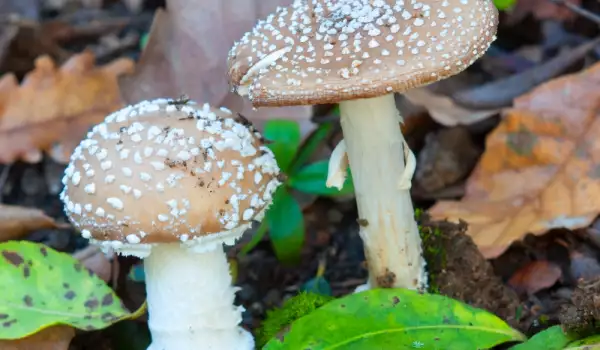
- Muscimolk - this is a hallucinogen with a hypnotic and sedative effect, which is capable of destroying consciousness;
- Ibotenic acid - a toxic substance that destroys brain cells;
- Muscarine - a natural alkaloid that dilates blood vessels and prevents the heart from contracting in a proper rhythm. After its ingestion, poisoning occurs with all the characteristic symptoms - low blood pressure, nausea and vomiting;
- Muscafurin - an antibacterial substance that also has anti-inflammatory and anti-tumor properties, which is why some fly agarics that contain it, such as the red one, are also used for medicinal purposes.
It is necessary to know that the most poison accumulates in the fly agaric in spring and summer and they are most dangerous in this period.
How does the amanita mushroom itself feed
The food of the amanita is organic substances, because it is unable to absorb carbon dioxide from the air and also has no chlorophyll.
Application of amanita
Microscopic amounts of the mushroom's venom are used in pharmacology to produce drugs. They are used for insomnia, joint pain, colds, infectious and cancer diseases. Preparations prepared with amanita mushroom are successfully applied in the treatment of wounds, pains and spasms, to increase immunity and to prevent bleeding.
Types of amanita
Perhaps the most interesting and useful question about amanita is that of species and their recognition, because this directly affects our health and even our lives. Here are the most famous types of amanita.
Red fly agaric
It is a highly poisonous basidium mushroom belonging to the amanita family. It has a beautiful body and is well known from all illustrations in children's fairy tales, where it is usually depicted as a representative of poisonous mushrooms.
The mushroom has a cap with a diameter of 5 to 15 centimeters, but there are also those with larger ones. When young, it is egg-shaped, then it turns into a ball and finally it is flat and slightly rounded. The color of the cap is red, to dark shades of the color with white scales on it. Older mushrooms are no longer as bright and may take on an orange hue.
The skin is smooth and sticky when wet. The flesh of the red fly agaric is soft, thin, white, under the skin with a yellowish tint, odorless.
Lamellae are free, dense, wide, do not reach the stump and are white in color.
The mushroom has a cylindrical stump, thickened, white or cream in color.
It reaches a height of 15 centimeters.
It grows in coniferous and deciduous forests from July to November.
It is distributed in Europe, the Americas, South Africa, Australia and Asia.
It is a highly poisonous mushroom, acting on the autonomic nervous system, circulation and digestion.
Twin of the Caesar's mushroom.
White amanita
This mushroom has a hemispherical cap at first, later it becomes convex and finally flat. It is white in color, but can also be pale cream. It has a smooth and moist surface. 10 centimeters in diameter is enough.
The lamellae are white and dense and not fused to the stump.
The stump is a cylinder and widens towards the base.
The flesh of the mushroom is white, dense, odorless, but an unpleasant smell can also be sensed. The flesh may change to bright yellow.
Grows up to 12 centimeters tall.
It grows in deciduous and less often coniferous forests. It likes warmer southern places and grows in groups.
It is a deadly poisonous mushroom.
It's a twin of the field mushroom.
Green amanita
The green amanita has a cap 6 to 15 centimeters in diameter. At first, the cap is egg-shaped, greenish brown to butter green to lemon in color with large white pieces, remnants of a general covering.
The flesh of the mushroom is white, to slightly greenish, with a pleasant taste, no smell.
Lamellae are free, yellow-green and dense.
The stump is cylindrical, up to 2 centimeters thick and 12 centimeters high on the entire mushroom.
It is found on all continents except Antarctica, in all types of forests, but most often in deciduous.
It is a highly poisonous mushroom, its poison is considered the strongest poison in nature.
The king of Sweden Amanita
It grows in oak and beech groves, as well as in pine forests. It has a large brown cap with a diameter of up to 20 centimeters. The flesh is yellow-brown and does not darken when cut. It is poisonous and causes hallucinations when consumed.
Panthercap - Spotted Amanita
Its brown cap ranges from globose to flat, through many shades of brown, and measures 5 to 15 centimeters in diameter, with a porous stem and is about 12 centimeters tall. The flesh of the mushroom is white, with an unpleasant smell.
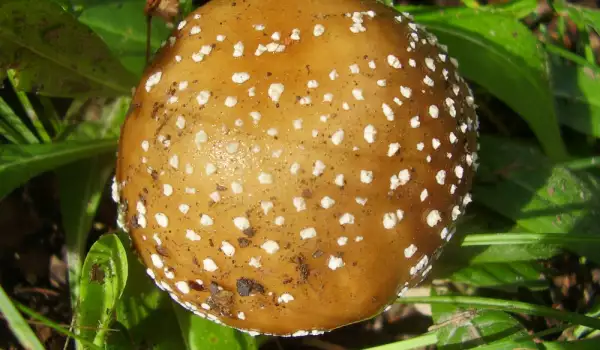
With a horizontal, slightly hanging ring.
It is a highly poisonous mushroom, which can cause death.
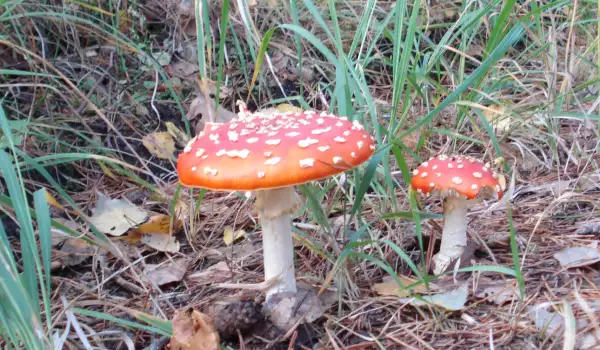

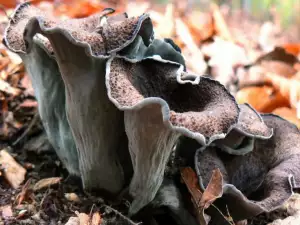

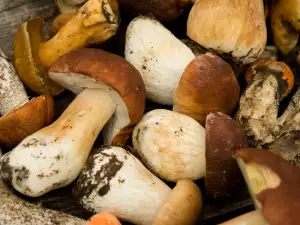
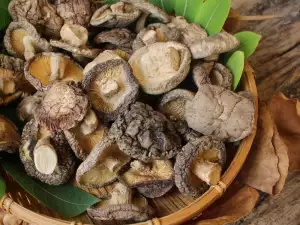
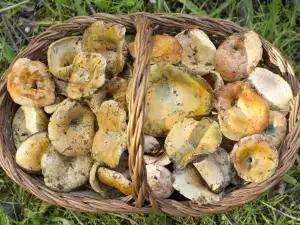
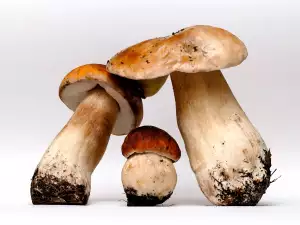
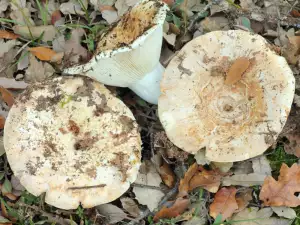
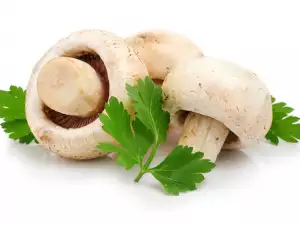
Comments